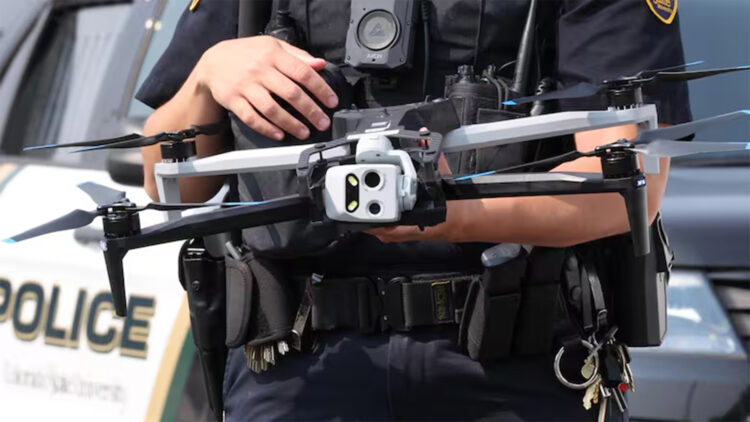The Miami Beach Police Department (MBPD) just added a powerful new tool to its toolkit: drones. Yes, it’s now part of their telecommunications parceling executing the “Drone as First Responder” (DFR) program, employing the latest technology like the Skydio X10 drone and RTIC (Real-Time Intelligence Center).
These drones assist the MBPD in a manner that was previously impossible, serving the city like “eyes in the sky” for real time surveillance. They send live video feeds assisting the officers and dispatchers in ascertaining the events as they unfold. MBPD out of all the departments is the first to acquire the technology in the state of Florida serving as a national embodiment of drone technology integrated into the police force.
How the “Drone as a First Responder” program works
If a 911 call comes through from Miami Beach, a drone might just be the first responder on the scene. While the drone is in flight, a pilot remotely situated can control drone movements in order to obtain real-time footage. This way, the officers heading to the incident scene can know what is happening before reaching the incident location.
The Drone First Responder (DFR) system is built for constant readiness. This is the reason the MBPD is able to position drones in the city to allow for rapid response and increased coverage. They perform a multitude of tasks including thermal imaging, searching at night, tracking car theft suspects, and even locating missing people.
When talking about price and effective use of resources, drones quickly outstrip helicopters. They consume fewer resources, require less upkeep, and can be deployed in a matter of seconds. Drones, like the Skydio X10, are equipped with high-resolution cameras, advanced stabilization, cutting-edge navigation, and supreme weather resistance. Such drones are a great boon in places like the Miami Beach.
The real-time intelligence center: The brain behind the operation
The most important part of this initiative is the Real-Time Intelligence Center (RTIC). This is a powerful surveillance integration center for the whole city.
The RTIC collects streams from approximately 850 cameras, from 30 license plate readers, from coastal activity Marine radar systems, and from social media threat monitoring systems. RTIC operators can deploy Skydio X10 drones to active incidents and provide real-time aerial coverage to the field officers.
This integration enables what the experts call “situational awareness,” which enables the officers to act strategically as they are not blankly rushing into the situation. For Miami Beach, the RTIC has multifunctional capabilities: It monitors crime, manages large events, protects traffic, and helps during disasters.
The real-time capability granted to the city provides an extra security layer for the residents and tourists in this coastal city that gets millions of visitors.
A model for the future of policing in Florida and beyond
The Miami Beach case mirrors an advancing trend in Florida and the entire country—a trend in which drones are no longer fancy tech gadgets in police departments but integral to the safety and security of the communities. From crime prevention to quicker crime response times, the drones with the MBPD DFR Initiative demonstrate a level of public safety policing investment that other cities may wish to replicate.
Steven Meiner, the Mayor of Miami Beach, says that this technology is saving money and increasing arrests and crime prevention. More than the numbers, drones represent a metrical change promise to innovation and safety.

